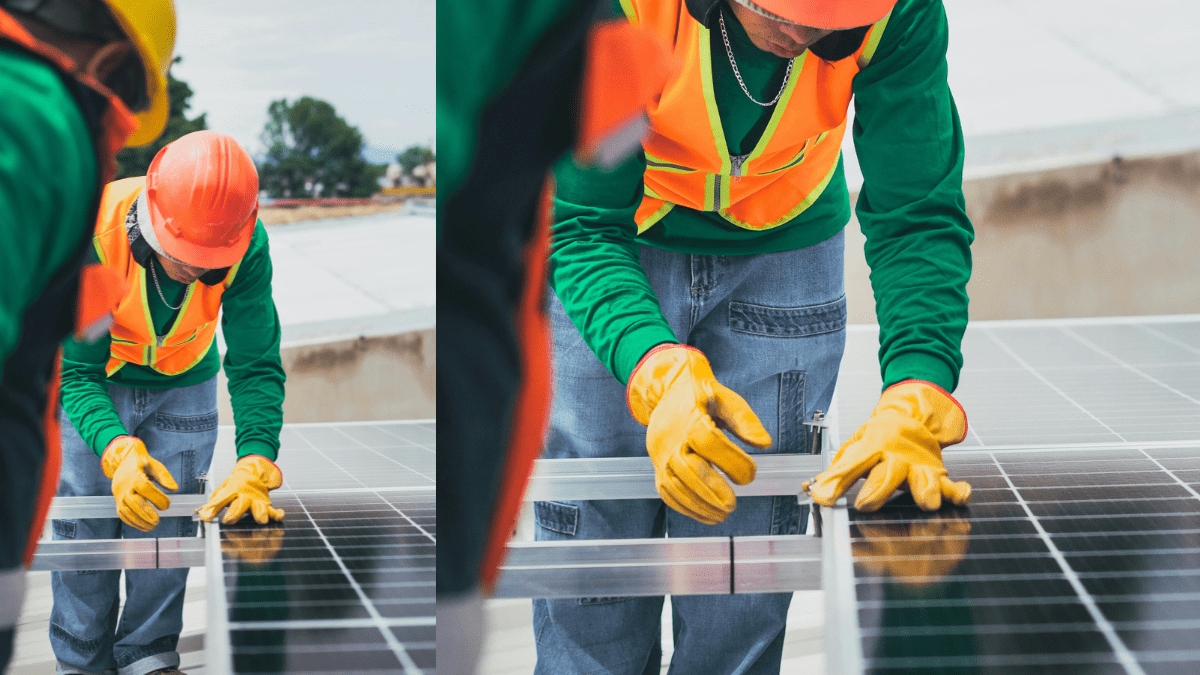As the world moves away from fossil fuels, renewable energy technologies are transforming the energy industry. These innovations are not just reducing our reliance on fossil fuels, they’re reshaping the entire energy landscape.
Solar Power Innovations: Beyond the Traditional Panels
Solar technology has advanced far beyond traditional rooftop panels
Key innovations:- Renewable Energy
| Solar windows that generate energy Flexible solar panels for portable applications Solar-powered desalination for clean water Wind Energy: Going Bigger and Smarter |
Wind energy is evolving with larger:- Renewable Energy
Key innovations
- Floating wind farms for deep-water installations
- AI-driven maintenance for wind turbines
- Hybrid wind-solar farms for continuous energy generation
Wind energy system converts the kinetic energy of wind using wind turbines which are at times installed on land referred to as onshore wind energy and at other times installed in rivers and seas or oceans as offshore wind energy. Wind energy has been around for thousands of years, however onshore and offshore wind energy technology has improved in the last few years through increased tower heights and rotor diameters.
It is evident that average wind speed differs region by region; nonetheless,hw09-con-02 establishes that the world’s technical wind energy potential is larger than global electricity generation.
Most parts of the world contain adequate potential to support wind energy implementation on a large scale.
Most regions of the world provide reliable wind velocities, but, optimum sites for producing wind energy may well be located in rather unconnected sites. There is great potential in wind power generation from offshore locations The use of wind power offshore locations possess great potential The use of wind power from offshore region possess great potential.
Hydropower: Harnessing Water in New Ways
Hydropower is expanding beyond traditional dams, with new technologies that harness the power of water in innovative ways.
Key innovations:-
- Tidal and wave energy converters
- Small-scale hydropower for local use
- Pumped-storage hydropower for energy storage
Geothermal Energy:- Geothermal energy is becoming a more viable option as technology advances.
Key Innovations for Renewable Energy
| Enhanced geothermal systems that work in more locations Direct-use applications for heating and cooling Integration with other renewable energy sources |
Biomass Energy: Turning Waste into Power
Biomass energy is transforming agricultural waste, wood, and even algae into valuable energy sources.
Key innovations:
Advanced biofuels for transportation
Biogas from organic waste
Combined heat and power (CHP) systems
Energy Storage: Solving the Intermittency Problem
Energy storage is crucial for the widespread adoption of renewable energy.
Key innovations:
- Solid-state batteries for longer life and safety
- Flow batteries for large-scale storage
- Hydrogen energy storage for long-term use
Smart Grids: Integrating Renewable Energy Seamlessly
Smart grids are most important for integrating renewable energy sources into the existing energy models
Key innovations:
| AI-driven demand response systems Microgrids for Local Energy Resilience Smart meters for better energy management |
Offshore Wind: Expanding Wind Energy’s Reach
Offshore wind farms are growing, thanks to new technologies that allow for deeper water installations.
Onshore wind power can generate a vast amount of power from clean sources to meet the electric demand of cities located in the coastal regions of the United States.
Using similar circumstances that promote the use of offshore wind, the National Renewable Energy Laboratory estimates that the technical resource potential of the USA offshore wind is well over 4200MW or 13,500TWh per year of generation, which is three times the electrical energy consumed by Americans each year.
To take advantage of the huge resources of wind that are available off the coast, the turbines can be made slightly larger with a height of one and a half times the Washington Monument and blades as long as a football field. Large turbines generate more power and therefore for the same level of electricity generation fewer turbines are required implying lower costs.
Key innovations:
- Floating wind turbines
- Larger, more efficient blades
- Enhanced grid connections for offshore energy
Solar and Wind Hybrid Systems: Maximizing Efficiency
Combining solar and wind energy systems can provide more consistent power.
Key benefits:
- Reduces reliance on fossil fuels
- Provides power in varying weather conditions
What is the most promising new technology in solar power?
Solar windows, which can generate energy while serving as standard windows, are a promising advancement, making them ideal for urban environments.
How do floating wind farms work, and what are their benefits?
Floating wind farms are installed in deep waters where traditional turbines can’t be anchored. They capture stronger winds, leading to higher energy production.
Is geothermal energy feasible in all regions?
Enhanced geothermal systems (EGS) are expanding the feasibility of geothermal energy to regions without natural geothermal activity, making it more widely accessible.
What challenges does renewable energy face, and how is technology addressing them?
The main challenge is energy intermittency. Innovations in energy storage, such as solid-state and flow batteries, are crucial in solving this issue and ensuring a stable energy supply.
What is Renewable Energy?
Energy from resources which the generation of possesses a self-replenishing ability; or, in other words, practically inexhaustible.
I know what Renewable Energy Systems are, however, what are the Benefits of Renewable Energy Systems?
Renewable energy sources are clean and for this reason, they are never depleted.
